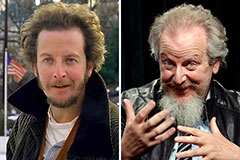Some Known Details About Uv/vis/nir
Table of ContentsUv/vis Fundamentals ExplainedTop Guidelines Of SpectrophotometersNot known Incorrect Statements About Uv/vis/nir The Of Circular Dichroism10 Easy Facts About Circular Dichroism Described

Spectrophotometry is most typically applied to ultraviolet, visible, and infrared radiation, contemporary spectrophotometers can interrogate broad swaths of the electromagnetic spectrum, consisting of x-ray, ultraviolet, noticeable, infrared, and/or microwave wavelengths. Spectrophotometry is a tool that hinges on the quantitative analysis of particles depending on how much light is absorbed by colored compounds.
The Circularly Polarized Luminescence PDFs
A spectrophotometer is frequently utilized for the measurement of transmittance or reflectance of services, transparent or opaque solids, such as refined glass, or gases. Although many biochemicals are colored, as in, they soak up visible light and therefore can be measured by colorimetric procedures, even colorless biochemicals can often be converted to colored compounds suitable for chromogenic color-forming reactions to yield substances ideal for colorimetric analysis.: 65 However, they can also be designed to measure the diffusivity on any of the listed light varieties that generally cover around 2002500 nm utilizing various controls and calibrations.
An example of an experiment in which spectrophotometry is used is the determination of the balance constant of an option. A particular chemical reaction within a solution may happen in a forward and reverse instructions, where reactants form products and items break down into reactants. At some time, this chemical response will reach a point of balance called a stability point.
Uv/vis - The Facts
The amount of light that travels through the service is indicative of the concentration of certain chemicals that do not enable light to go through. The absorption of light is due to the interaction of light with the electronic and vibrational modes of particles. Each type of molecule has an individual set of energy levels related to the makeup of its chemical bonds and nuclei and hence will take in light of specific wavelengths, or energies, resulting in distinct spectral properties.
They are extensively used in numerous markets including semiconductors, laser and optical manufacturing, printing and forensic examination, as well as in laboratories for the study of chemical compounds. Spectrophotometry is often utilized in measurements of enzyme activities, decisions of protein concentrations, determinations of enzymatic kinetic constants, and measurements of ligand binding reactions.: 65 Ultimately, a spectrophotometer is able to figure out, depending on the control or calibration, what substances are present in a target and exactly how much through calculations of observed wavelengths.
Created by Arnold O. Beckman in 1940 [], the spectrophotometer was developed with the help of his colleagues at his company National Technical Laboratories established in 1935 which would become Beckman Instrument Business and eventually Beckman Coulter. This would come as a service to the previously created spectrophotometers which were not able to soak up the ultraviolet correctly.
The Facts About Circularly Polarized Luminescence Uncovered
It would be discovered that this did not provide satisfying results, therefore in Design B, there was a shift from a glass to a quartz prism which permitted much better absorbance next outcomes - UV/Vis (http://www.video-bookmark.com/bookmark/6114703/olis-clarity/). From there, Design C was born with an adjustment to the wavelength resolution which ended up having three systems of it produced
It irradiates the sample with polychromatic light which the sample takes in depending on its properties. Then it is transmitted back by grating the photodiode selection which spots the wavelength region of the spectrum. Ever since, the production and execution of spectrophotometry gadgets has increased profoundly and has turned into one of the most innovative instruments of our time.

6 Easy Facts About Circularly Polarized Luminescence Described
Historically, spectrophotometers utilize a monochromator consisting of a diffraction grating to produce the analytical spectrum. The grating can either be movable or repaired. If a single detector, such as a photomultiplier tube or photodiode is used, the grating can be scanned stepwise (scanning spectrophotometer) so that the detector can measure the light strength at each wavelength (which will represent each "action").
In such systems, the grating is fixed and the strength of each wavelength of light is determined by a different detector in the array. Additionally, most modern mid-infrared spectrophotometers utilize a Fourier change technique to get the spectral info - https://www.twitch.tv/olisclarity1/about. This method is called Fourier change infrared spectroscopy. When making transmission measurements, the spectrophotometer quantitatively compares the portion of light that passes through a recommendation option and a test option, then electronically compares the strengths of the 2 signals and computes the percentage of transmission of the sample compared to the reference requirement.

 Daniel Stern Then & Now!
Daniel Stern Then & Now! Joseph Mazzello Then & Now!
Joseph Mazzello Then & Now! Brandy Then & Now!
Brandy Then & Now! Tiffany Trump Then & Now!
Tiffany Trump Then & Now! Barbara Eden Then & Now!
Barbara Eden Then & Now!